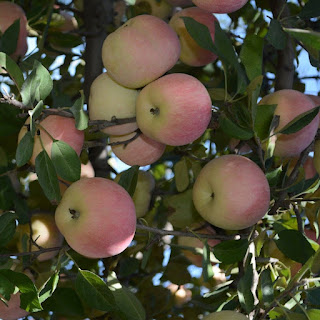Arabian Jasmine ( Chambeli )
Arabian Jasmine a Species of Jasmine
Common Name:
- Chambeli
- Jasmine
- White flower
- Mohle flower
- Pikake
Botanical Name:
Jasminum sambac
Scientific classification:
Genus:
Jasminum - Jasmine
Family:
Oleaceae - Olive
Order:
Lamiales - Mints plantains olives and allies
Class:
Magnoliopsida - Dicotyledons, Dicots, Eudicots
Phylum:
Tracheophyta - Vascular plants, Seed plants, Ferns, Tracheophytes
Characteristics:
Plant Type: Vine
Lifespan: perinial
Bloom Time: Mid spring, Late spring, Summer, Fall
Plant Height: 1.6 to 3 feet
Spread: 6 to 10 feet
Flower Size: 1 inch
Information:
- Arabian jasminehas much significance in many countries around the world.
- It is the national flower of both the Philippines and Indonesia.
- It is regularly used in ceremonial costumes and decorations in Sri Lanka, while in China it is the key ingredient in Jasmine tea.
- Hawaiians use arabian jasmine to make fragrant leis, and in Pakistan, Bangladesh and India it is used in garlands and hair adornments.
Interesting Facts:
According to legend, a Filipino soldier was unwilling to yield and took part in a patriotic movement, but he unfortunately died. His girlfriend died of depression. At his girlfriend's grave, a flower grew that had never been seen before, and it was full of fragrance, it was the arabian jasmine . After that, arabian jasmine became the national flower of the Philippines.
Symbolism:
Loyalty, respect and purity
National Flower:
Philippines
Habitat:
Under glass, unheated greenhouse, conservatory, gardens
Flower Color:
White
Leaf Color:
Green
Fruit Color:
Black٫ Purple
Stem Color:
Green
Conditions Requirement:
Difficulty Rating:
Growing Arabian jasmine is easy as long as you can give them what they need. They are sensitive to certain types of pests and diseases.
Sunlight:
Full sun, Partial sun
Hardiness:
20 ℉
Hardiness Zones:
9
Soil:
Loam, Sand, Clay, Sandy loam, Acidic, Neutral, Alkaline
Care Guide:
Water
Arabian jasmine is a thirsty plant and needs a regular supply of water, especially during the warmer months.
Oversaturated soils will cause its roots to rot, so it shouldn't be over watered.
A deep watering every time the top finger-depth of soil becomes dry is the best system to keep this plant happy and healthy.
Fertilization:
Fertilization once every 2-3 months during the growing season.
Pruning:
Deadhead (or remove) withered flowers after flowering.
Planting Time:
Spring, Early fall, Mid fall
Propagation:
Cutting, Layering
Potting Suggestions:
Choose pots of different sizes according to the size of the plant. Potted Arabian jasmine should be repotted once a year.
Pests and Diseases:
Aphids, mealybugs
Plant Distribution:
- Native
- Cultivated
- Invasive
- Potentially invasive
No species reported
Tips from Garden Coaches:
Shrubs and vines in the genus Jasminum are famous for their attractive, pale, star-shaped blooms of flowers and distinctive fragrance. They are not difficult to maintain.
Uses:
Economic Value:
Arabian jasmine has a delicate fragrance. Jasmine oil can be extracted and used as a raw material for making essence.
Garden Use:
Arabian jasmine is an evergreen climbing shrub commonly found in tropical gardens. It is prized for its deep green foliage and intensely fragrant flowers. It is suitable for hedging and its flowers are used to flavor teas. arabian jasmine is an appropriate ornamental for tropical gardens. Plant with Crepe Myrtle and Lantana for visual contrast.




Comments
Post a Comment